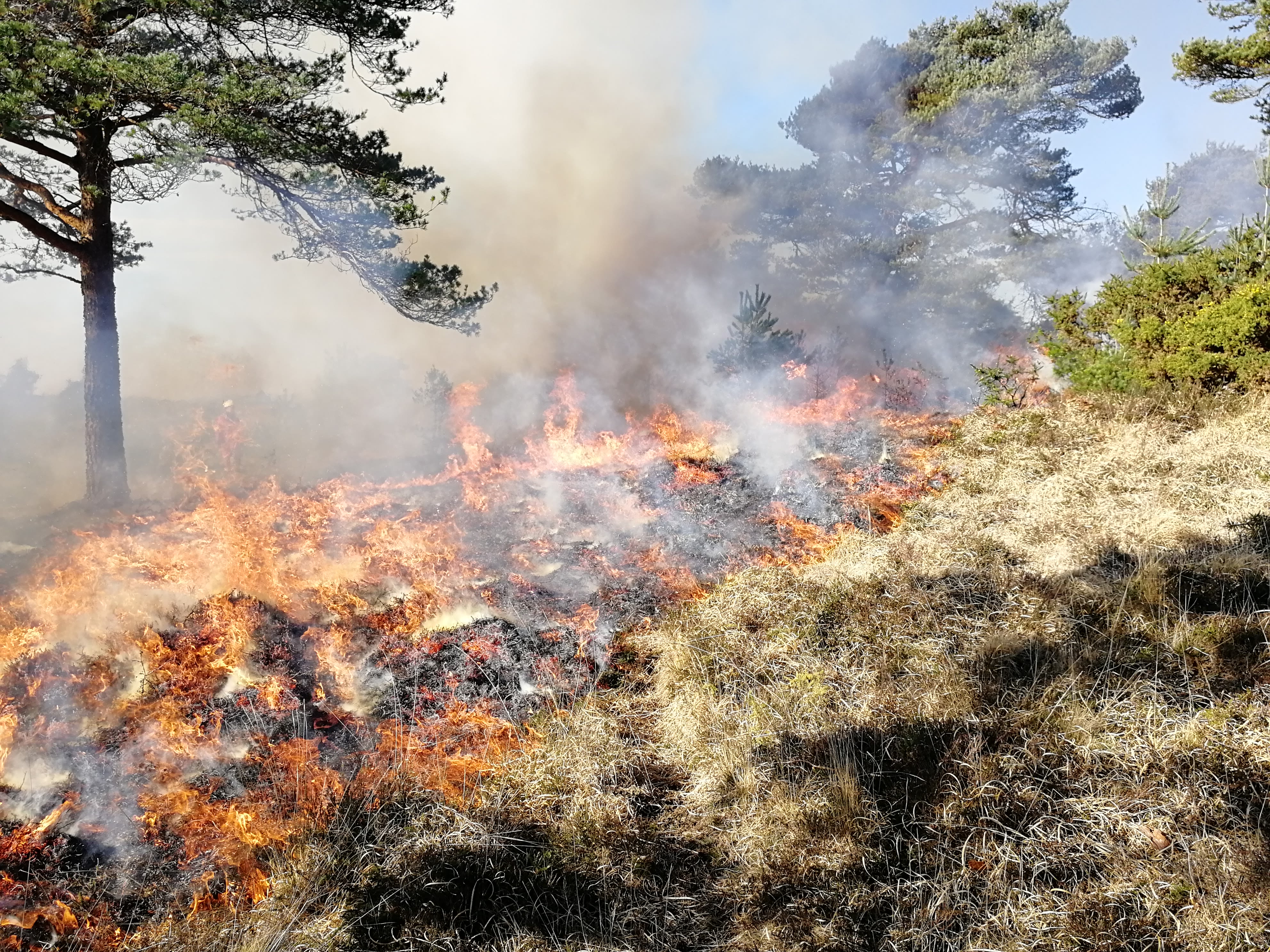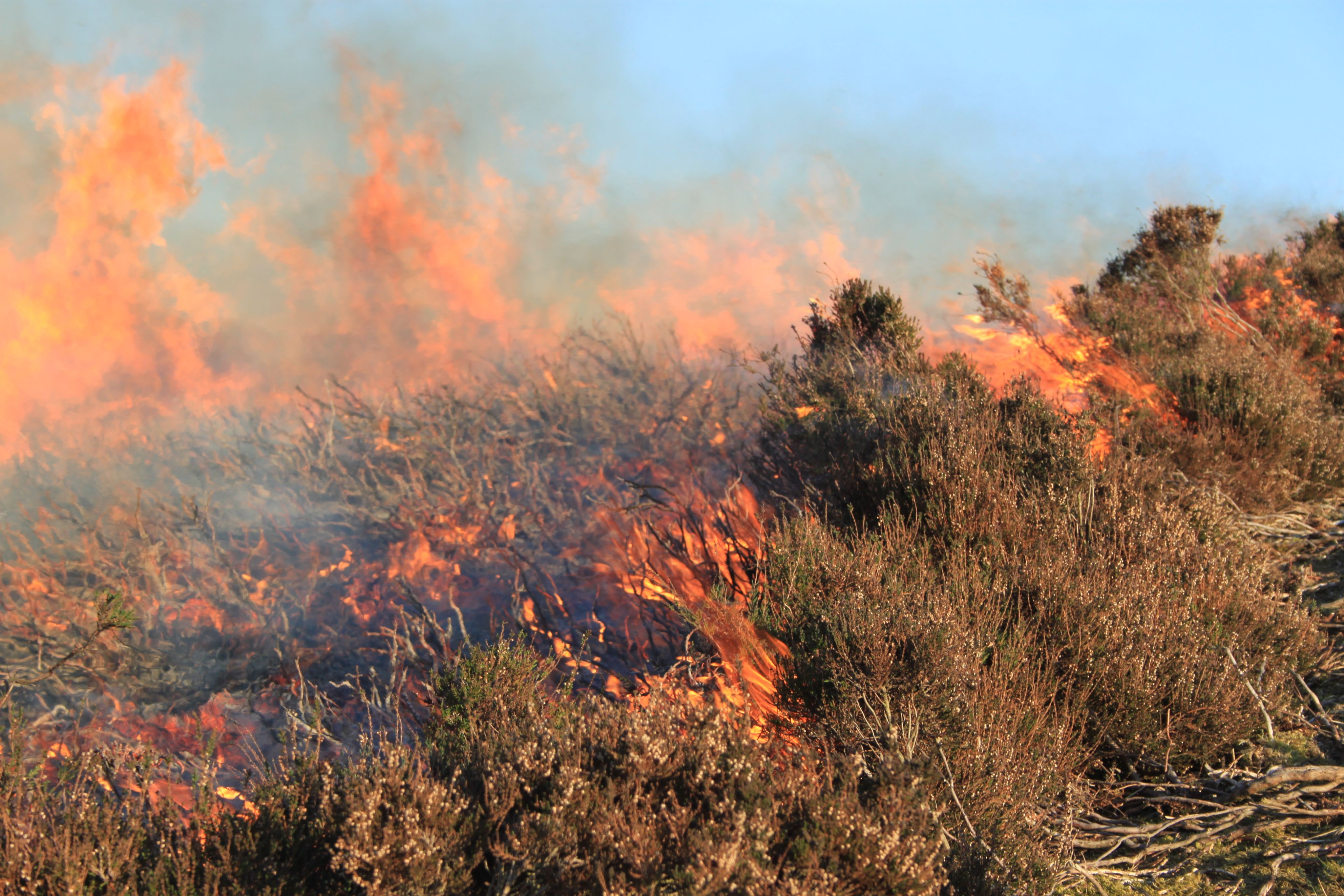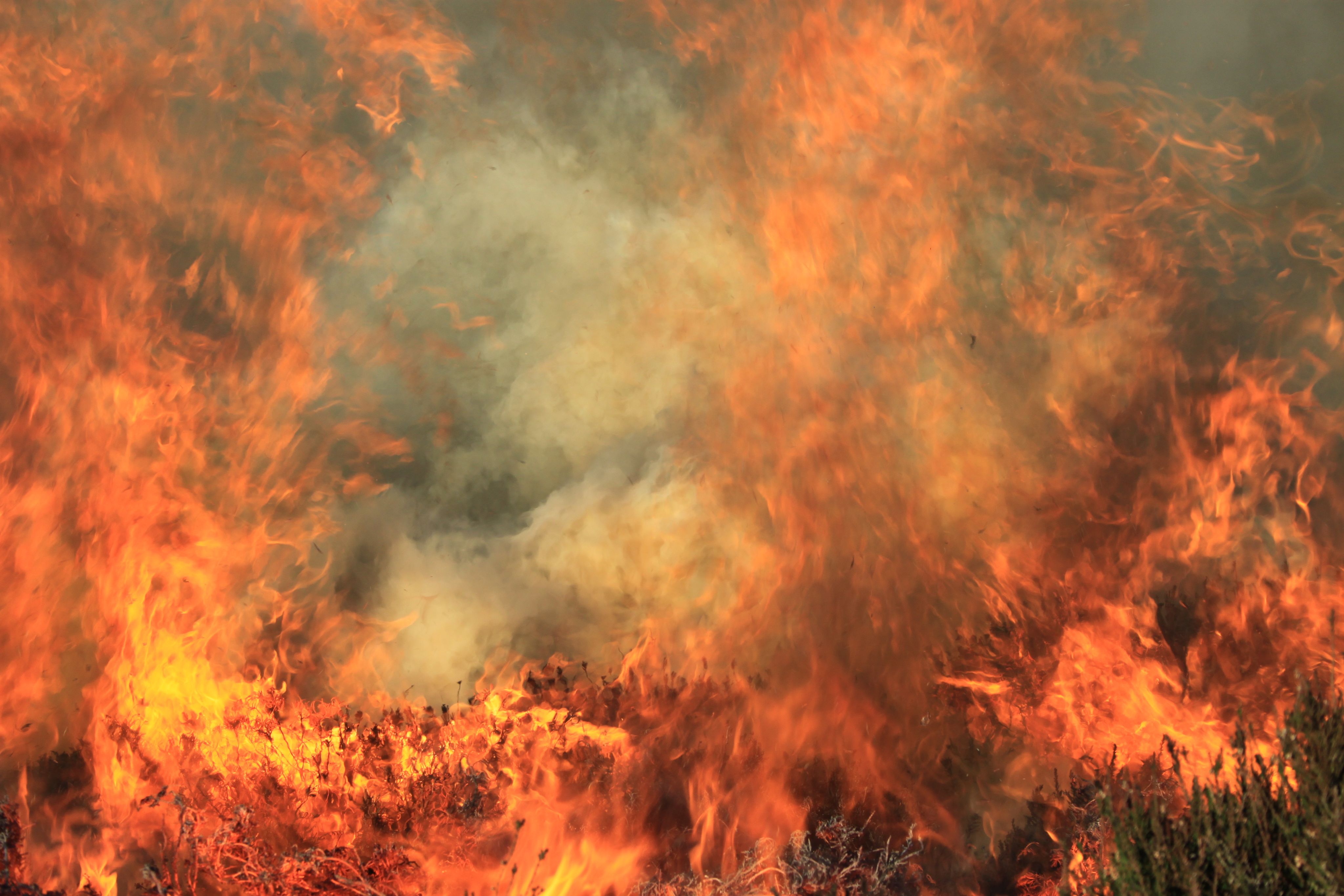Hot topic:
How the UK is more at risk of wildfires than ever before

Ash crunches underfoot and an acrid smell lingers in the air. The desiccated remains of trees stand buckled and broken. Regrowth - bramble, bracken, patches of grass - struggles to be born amidst scorched earth. This is a vestige of almost 17 hectares at Canford Heath, Dorset: once landscape, now 'burnscape.'
Whilst a structural fire is ultimately constrained by four walls, wildfires are different. They are dynamic, fickle, and bound only by the realms of available fuel, weather, geography, and topography. Once ignited, they devour resources over huge areas. Some can burn for days, even weeks.
The Canford Heath blaze on the 23rd of April consumed land equivalent to 23 international football fields and took over 25 firefighting vehicles to put out.
For the wardens who care for one of Dorset's rarest environments, it was a stark reminder of the damage these disasters can inflict.
Wildfires occur mostly in spring because the fuels available dry out: "You've got a 'goldilocks window' where things are dry and warm in the environment and yet the plant hasn't greened up yet, and that is very much the season for the shrublands of the UK to ignite," explains Dr Thomas Smith, an Associate Professor in Environmental Geography at LSE.
For a despondent warden Agi, spring 2022 has been alarming. Since the fire on the 23rd April, smaller blazes have followed. "This is the end of May, and we've already had more fires than last year. Something isn't going well."
This Canford Heath fire is part of a more troubling pattern nationwide: more fires, larger fires, over longer periods.
"What we've witnessed before 2018 was that there'd be a 'fire year' in the UK every four years or so, but something has changed in the last five years. There hasn't been a year without significant wildfires since 2018 and that includes this year - in fact, this year's stats look like they might exceed last year's stats," Thomas explains, "but we've got a real issue establishing whether there is a trend or not, and whether this is the new norm."
Andy Elliott, a wildfire consultant from Dorset who describes wildfires as 'his life', is a heavyweight in operational firefighting with 39 years of experience wolrdwide. He believes climate change is beginning to bite: "That Mediterranean climate, if you like, is moving north." Difficult 'fire years' will become common-place as the UK experiences heatwaves, droughts, and drier springs. The 'goldilocks window' - the time when fuel is available to burn - will be longer, and therefore chances of ignition greater. "It's a bleak sort of sounding picture, but we are moving in that direction and I've seen larger and much more frequent fires in more recent years."
The scale of horror blazes in Australia, where three billion animals burned alive, and California, where an apocalyptic orange sky blotted out the sun, is unlikely; the UK's natural landscape is too fragmented and non-continuous, unlike wilderness overseas. But as Thomas warns, "there's no reason we won't see the severity of those fires in the coming years."
In 2018, a wildfire at the seaside resort of Mati, Greece, reached 800 celsius. It killed 103. Andy, who attended the aftermath, says: "the weather conditions on the day of the Mati fire are the kind of weather conditions we get now in the UK. That kind of thing is not impossible. We could find ourselves faced with a wildfire disaster."


How prepared are we?
Historically, fire and rescue services have lacked specific resources for wildfires. For example, "the vast majority of firefighters are fighting [wildfires] wearing structural personal protective equipment." Andy explains that that's the thick and heavy uniform designed to protect staff when they're inside a building, not in the open air. "This is a challenge and limits how long you can fight a wildfire safely." The dearth of equipment is because firefighting in the UK is still weighted in favour of structural fires and road traffic collisions, those life-or-death daily incidents. "Budget governs everything," Andy says about firefighting priorities, "it's dictated by the money that's available and immediate threats to lives and livelihoods."
"The biggest problem with wildfires for Fire Rescue services is the impact it has on resources," says Andy. Wildfires will almost always be the largest incidents attended to. "That's a large amount of fire engines that are not available to deal with road traffic collisions, not available to deal with property fires, and they can be there for a long time." The impact of firefighters themselves can't be ignored either. On-call firefighters crew 60% of all fire engines in the country and when faced with repeat wildfires "those people will become exhausted," says Andy, and "reach a point where they have to take time off just so they're safe to operate."
Yet Andy stresses that the Fire and Rescue service is rising to the challenge, and that the issue is being taken seriously. Thomas points out that "fifteen to twenty years ago, there were probably only two services in the country that have any specialised training, let alone equipment, to fight wildfires and that has changed. I think there are plenty of people who are trained to fight wildfires and not just trained to fight but also to lead [the response]."
But both are adamant that the country's resilience depends on the partnership between blue light services and land management. According to Andy, close working proved vital in putting out the Canford Heath fire: "the outcome of that fire was a success story for the mitigation measures that have been put in place as a result of partnership working." Fire-breaks, maintained by the council, prevented the fire from spreading. This needs to continue across the country by other councils and organizations like the Forestry Commission, and Thomas agrees: "All three things - ignition, land management, and the climate - are important."
Even so, wildfires will still be dangerous, and it is perhaps the unreported consequences, on our environment and wildlife, that is most poignant. In the aftermath of the Canford Heath fire, the wardens found a hedgehog that had tried to escape the heat by running straight under the wheels of a fire engine. "That was the first hedgehog we've ever seen on the heath," Agi mourned.

A multimedia feature by Samuel Hewetson.
Photo Credits: Samuel Hewetson, Andy Elliott, Odhran Penfold.
With thanks to: Dr Thomas Smith, Andy Eliott, warden Agnes Szego, and warden Ed.
